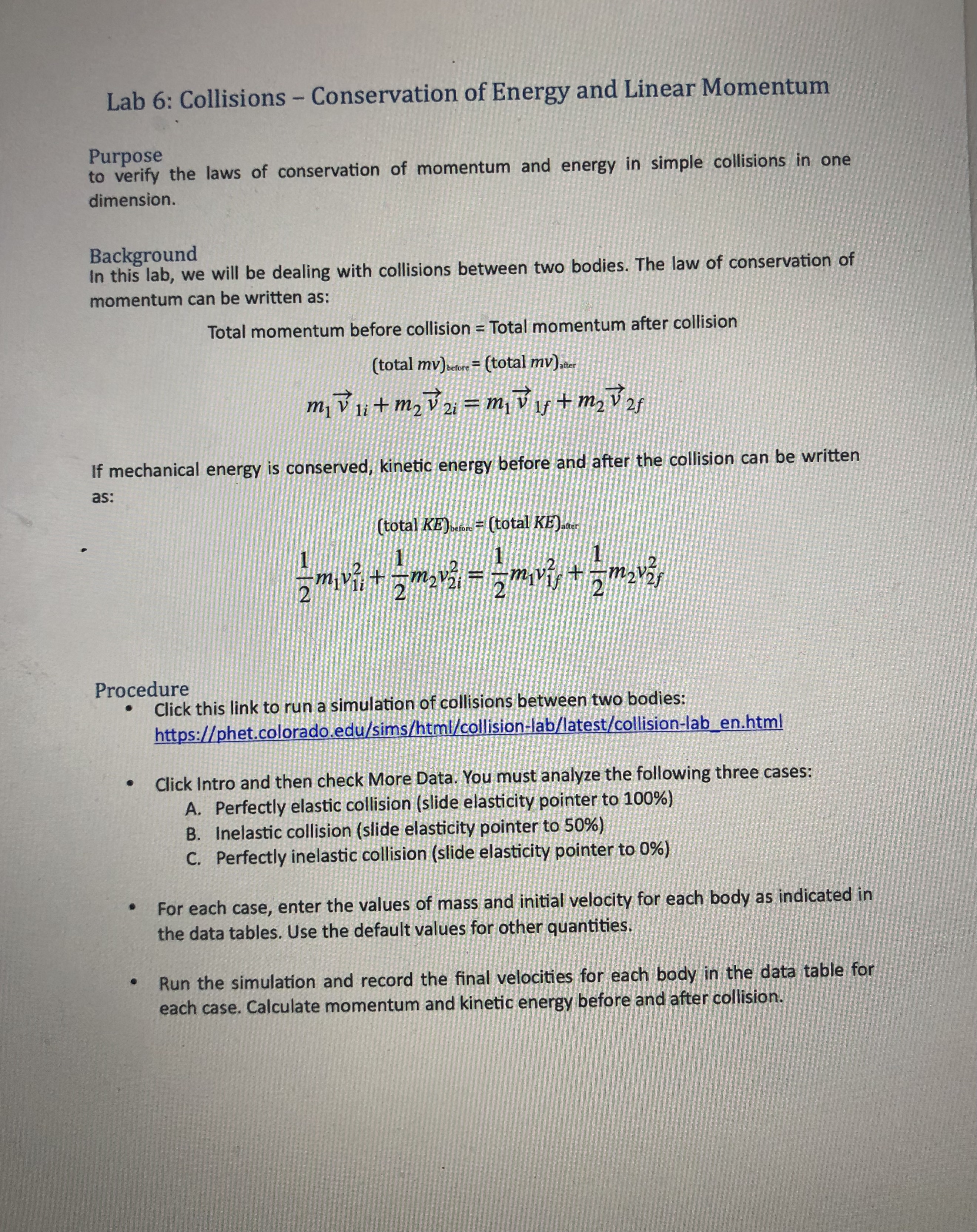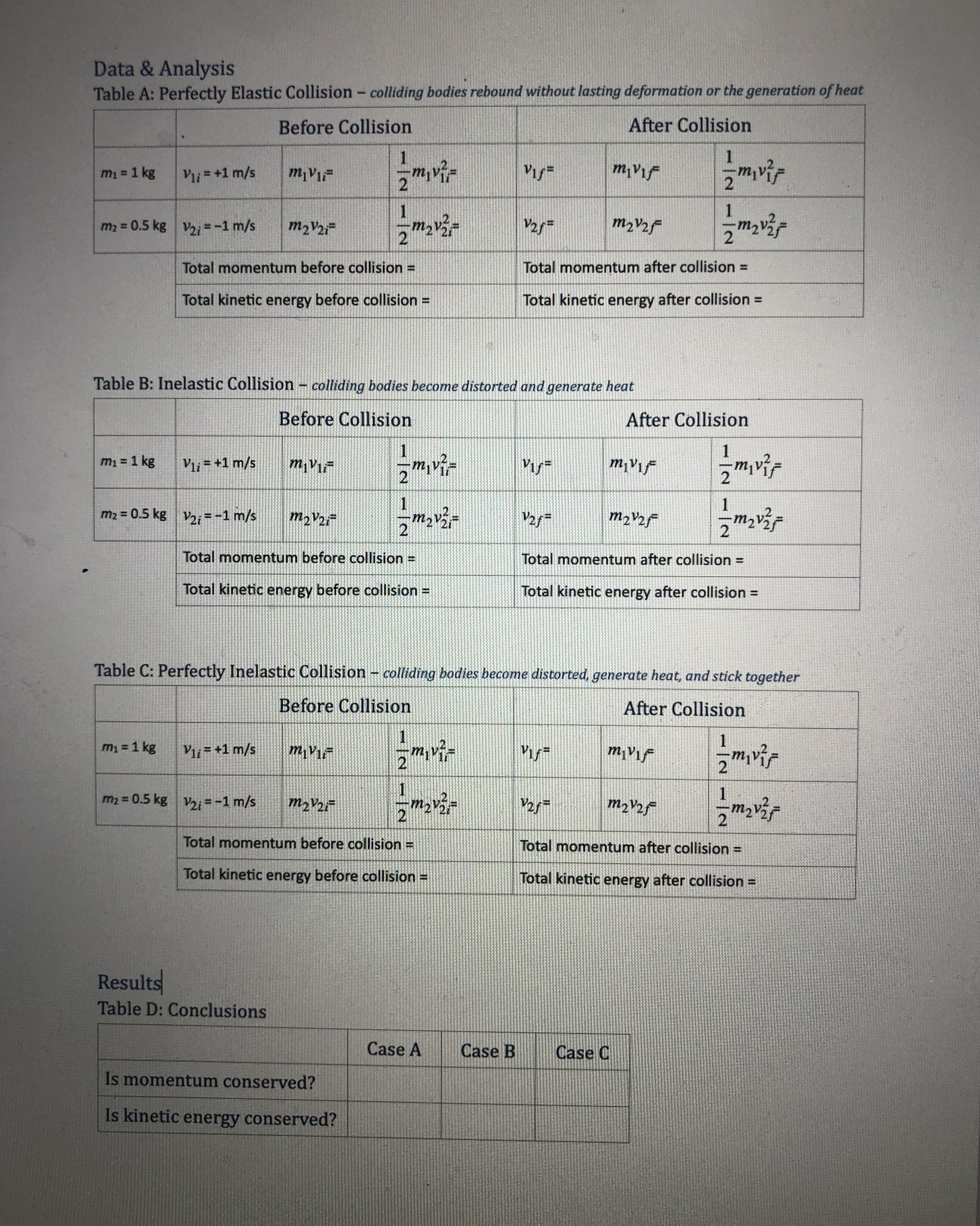Answered step by step
Verified Expert Solution
Question
1 Approved Answer
Procedure Click this link to run a simulation of collisions between two bodies: https://phet.colorado.edu/sims/html/collision-lab/latest/collision-lab_en.html Click Intro and then check More Data. You must analyze the
Procedure
- Click this link to run a simulation of collisions between two bodies:
https://phet.colorado.edu/sims/html/collision-lab/latest/collision-lab_en.html
- Click Intro and then check More Data. You must analyze the following three cases:
- Perfectly elastic collision (slide elasticity pointer to 100%)
- Inelastic collision (slide elasticity pointer to 50%)
- Perfectly inelastic collision (slide elasticity pointer to 0%)
- For each case, enter the values of mass and initial velocity for each body as indicated in the data tables. Use the default values for other quantities.
- Run the simulation and record the final velocities for each body in the data table for each case. Calculate momentum and kinetic energy before and after collision.


Step by Step Solution
There are 3 Steps involved in it
Step: 1

Get Instant Access to Expert-Tailored Solutions
See step-by-step solutions with expert insights and AI powered tools for academic success
Step: 2

Step: 3

Ace Your Homework with AI
Get the answers you need in no time with our AI-driven, step-by-step assistance
Get Started


